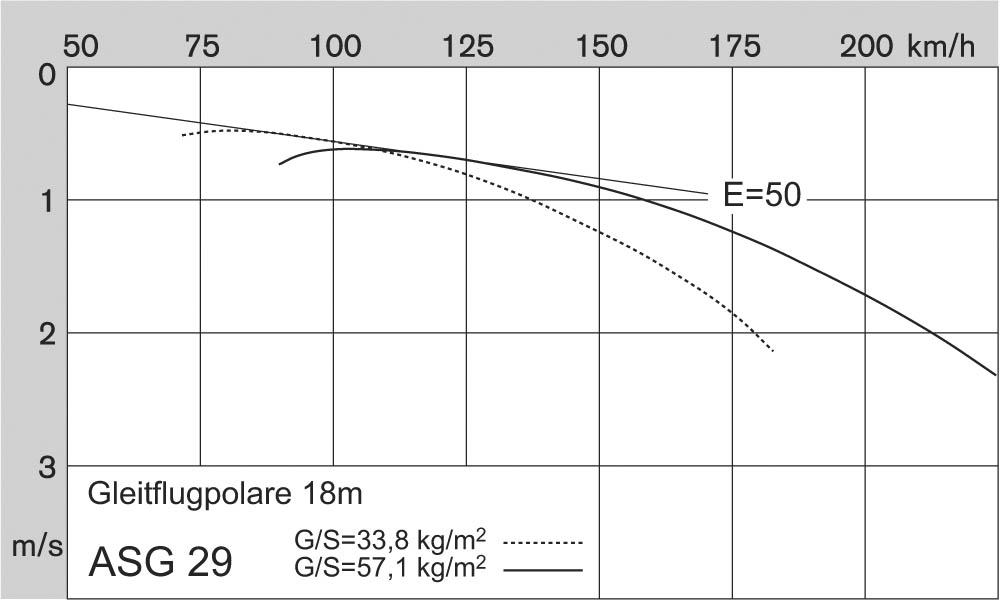Numbers in a glide
Thread Starter
Join Date: Jun 2017
Location: Madrid
Posts: 153
Likes: 0
Received 0 Likes
on
0 Posts
Numbers in a glide
Hi!
Some questions that are appearing in performance exams compare a light and a hevier aircraft in a glide.
So, I know the heavy aircraft will have an increased ROD. But what about the descent gradient and angle?
Descent gradient is proportional to ROD (Gradient = ROD/TAS * 6000/6080). So, gradient will also increase?
And what about descent angle? If Gradient = tan(angle) * 100, will this also increase?
Thanks!
Some questions that are appearing in performance exams compare a light and a hevier aircraft in a glide.
So, I know the heavy aircraft will have an increased ROD. But what about the descent gradient and angle?
Descent gradient is proportional to ROD (Gradient = ROD/TAS * 6000/6080). So, gradient will also increase?
And what about descent angle? If Gradient = tan(angle) * 100, will this also increase?
Thanks!
Join Date: Oct 2017
Location: UK
Posts: 5
Likes: 0
Received 0 Likes
on
0 Posts
The still air descent angle in a glide depends upon the lift/drag ratio.
To maintain the optimum glide angle at a higher weight will require a higher speed.
The glide angle will not change.
For teaching purposes I drew a diagram to illustrate this. If I can dig it out I will post it.
To maintain the optimum glide angle at a higher weight will require a higher speed.
The glide angle will not change.
For teaching purposes I drew a diagram to illustrate this. If I can dig it out I will post it.
It depends what level of detail you want to go to. It*may* change because:
1. Form drag increases with the square of velocity whilst lift will remain the same, reducing (steepening) L/D, and;
2. At the higher airspeed the wing will be operating at a higher Reynolds Number, which will usually increase Cl for a given AoA and so keeping the lift constant would increase (flatten) L/D.
Which of these effects dominates (or indeed if they cancel out) is down to the individual aeroplane, but it's not at all uncommon to find an aeroplane whose best L/D is higher at higher weights even though the sink rate is higher. That's why cross-country sailplanes carry water ballast.
PDR
1. Form drag increases with the square of velocity whilst lift will remain the same, reducing (steepening) L/D, and;
2. At the higher airspeed the wing will be operating at a higher Reynolds Number, which will usually increase Cl for a given AoA and so keeping the lift constant would increase (flatten) L/D.
Which of these effects dominates (or indeed if they cancel out) is down to the individual aeroplane, but it's not at all uncommon to find an aeroplane whose best L/D is higher at higher weights even though the sink rate is higher. That's why cross-country sailplanes carry water ballast.
PDR
Last edited by PDR1; 30th May 2018 at 16:15.
If you increase speed in a glide (decreasing your AOA), how can your glide angle not change?
The higher weight means that you will achieve a higher speed at the same angle of attack, maintaining the best L/D ratio as before.
Join Date: Dec 2010
Location: in a 5 m/s thermal
Age: 29
Posts: 46
Likes: 0
Received 0 Likes
on
0 Posts
Look up a glide polar, on that, you can see, that the polar slides on the line which is tangent to the optimum speed point. Therefore, as described above, the speed of max L/D increases (as well as the associated vertical speed, however, the ratio stays the same).
(altough, sometimes the actual glide ratio can vary on gliders with the ballast, especially on the longer ones, as with water on board the wing is more stiff, helping to stay at the optimal shape at high speed, more likely with older designs)

(altough, sometimes the actual glide ratio can vary on gliders with the ballast, especially on the longer ones, as with water on board the wing is more stiff, helping to stay at the optimal shape at high speed, more likely with older designs)

Join Date: Dec 2010
Location: in a 5 m/s thermal
Age: 29
Posts: 46
Likes: 0
Received 0 Likes
on
0 Posts
Imagine it as a triangle.
On the first one, your forward speed is 50 m/s, and the vertical speed is 2 m/s.
You are heavier, therefore the optimum is say, 100m/s, the correspodning vertical speed is 4m/s. So the ratio is still 25:1(you will land at the same spot, altough you will get there faster), and as both sides of the triangle enlarge by the same factor, the angle should be the same. So the angle will be the same, and the gradient is the same as the glide ratio (expressed in other values) so yes, they will be the same.
Hope its getting clearer.
On the first one, your forward speed is 50 m/s, and the vertical speed is 2 m/s.
You are heavier, therefore the optimum is say, 100m/s, the correspodning vertical speed is 4m/s. So the ratio is still 25:1(you will land at the same spot, altough you will get there faster), and as both sides of the triangle enlarge by the same factor, the angle should be the same. So the angle will be the same, and the gradient is the same as the glide ratio (expressed in other values) so yes, they will be the same.
Hope its getting clearer.




